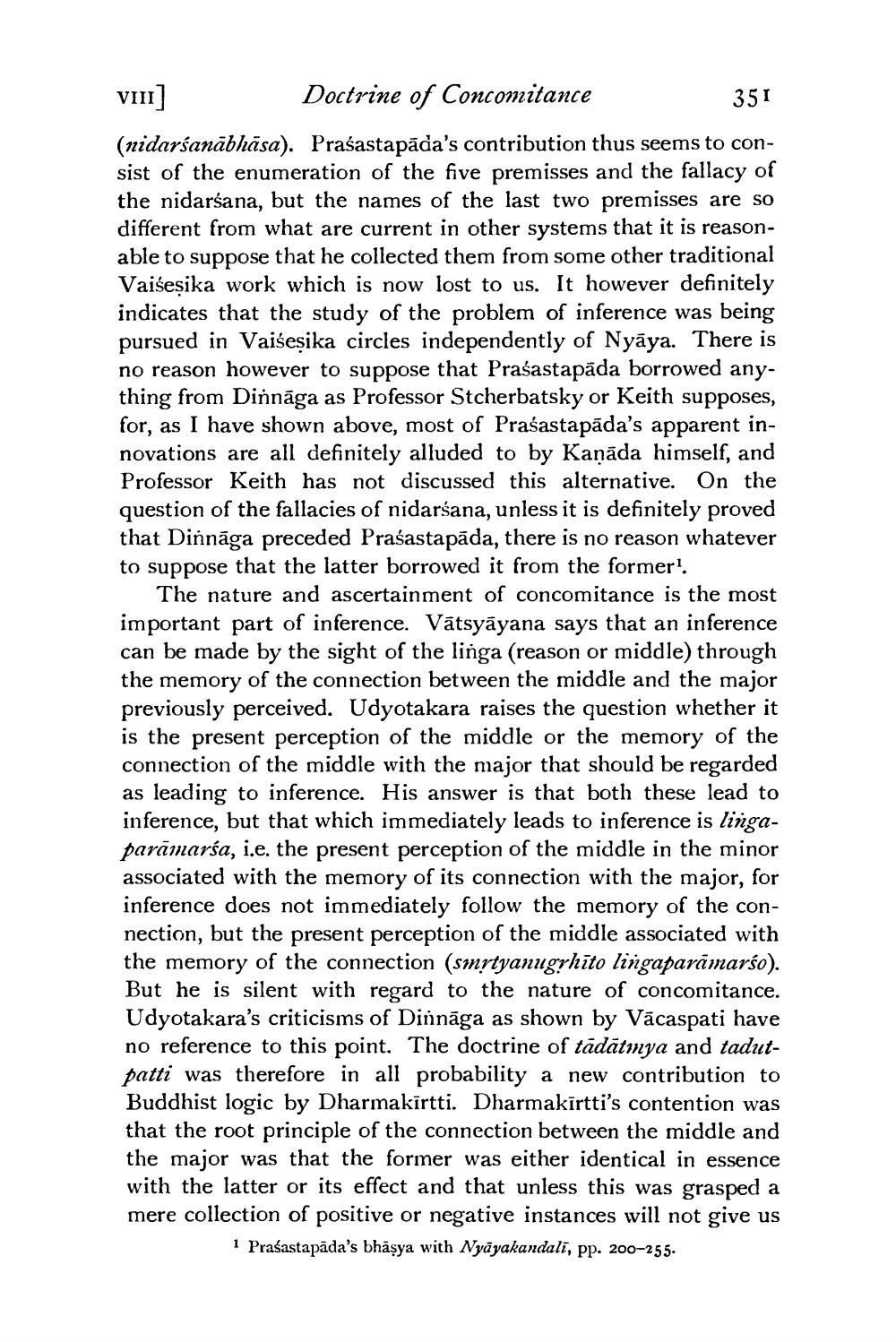________________
VI]
Doctrine of Concomitance
351
(nidarśanābhāsa). Praśastapāda's contribution thus seems to consist of the enumeration of the five premisses and the fallacy of the nidarśana, but the names of the last two premisses are so different from what are current in other systems that it is reasonable to suppose that he collected them from some other traditional Vaiseșika work which is now lost to us. It however definitely indicates that the study of the problem of inference was being pursued in Vaiseșika circles independently of Nyāya. There is no reason however to suppose that Prasastapāda borrowed anything from Dinnāga as Professor Stcherbatsky or Keith supposes, for, as I have shown above, most of Prasastapāda's apparent innovations are all definitely alluded to by Kanāda himself, and Professor Keith has not discussed this alternative. On the question of the fallacies of nidarśana, unless it is definitely proved that Dinnāga preceded Prasastapāda, there is no reason whatever to suppose that the latter borrowed it from the former!
The nature and ascertainment of concomitance is the most important part of inference. Vátsyāyana says that an inference can be made by the sight of the linga (reason or middle) through the memory of the connection between the middle and the major previously perceived. Udyotakara raises the question whether it is the present perception of the middle or the memory of the connection of the middle with the major that should be regarded as leading to inference. His answer is that both these lead to inference, but that which immediately leads to inference is lingaparāmarśa, i.e. the present perception of the middle in the minor associated with the memory of its connection with the major, for inference does not immediately follow the memory of the connection, but the present perception of the middle associated with the memory of the connection (smrtyanugrhīto lingaparāmarso). But he is silent with regard to the nature of concomitance. Udyotakara's criticisms of Dinnāga as shown by Vācaspati have no reference to this point. The doctrine of tādātınya and tadutpatti was therefore in all probability a new contribution to Buddhist logic by Dharmakīrtti. Dharmakīrtti's contention was that the root principle of the connection between the middle and the major was that the former was either identical in essence with the latter or its effect and that unless this was grasped a mere collection of positive or negative instances will not give us
i Prasastapāda's bhāşya with Nyāyakandali, pp. 200-255.




